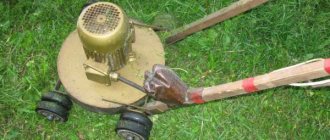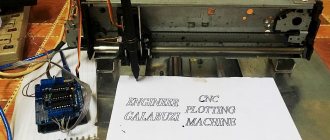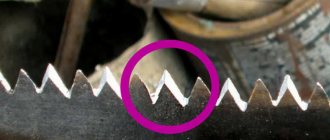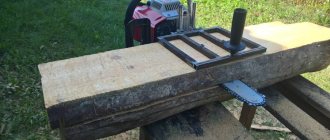What you need to prepare for work
To assemble a cyclone for a vacuum cleaner with your own hands, you will first need a vacuum cleaner, which is usually used in everyday life. An average power of 1 kW is sufficient, at which the homemade structure does not deform, and small pebbles, dust and shavings are easily drawn in. To collect waste, you will need a plastic barrel with a lid, with a capacity of 40 to 70 liters, depending on individual needs.
It is also necessary to purchase or use the remains from the arrangement of the plumbing system of the house, in the form of a plastic pipe 50X150 mm. To connect the parts you will need:
- eccentric adapter from pipe to inlet, 50X40 mm;
- plastic cuff, 40X50 mm;
- screws, sizes M4X12, M4X20 and 4X8;
- washers and nuts 4X8.
Sealing of sealed seams is carried out using a gun for thermal melting and adhesive supply, with an operating temperature of about 150 degrees.
Ring retainer installation steps
The ring is attached to the cut out side of the plastic container.
- Screw the side using self-tapping screws.
- To prevent the plywood from bursting from the screws, you need to drill holes at the fastening points of a smaller diameter than the thickness of the screws.
- On the lid of a large container, a circle is marked equal to the diameter of the bottom of the container itself.
- Cut out the resulting circle, securing it to the side of a small container with screws.
Preparatory actions
When you have stored all the materials to make a cyclone vacuum cleaner with your own hands, you can begin preparing the individual parts. First, in the upper part of the barrel, you need to cut an ellipsoidal hole for the inlet pipe, which will be attached to the wall of the barrel at a tangential angle, going inside by 10-15 cm. A hole of round diameter must be made in the lid of the barrel according to the size of the inlet coupling of the adapter from a sewer pipe 40X50 mm .
As an option, you can make a removable cyclone with your own hands with a home vacuum cleaner, if you use a piece of plastic pipe 40X100 mm, and insert the pipe into the lid, which will tightly close the larger diameter.
Top outlet mounting
- The entries are drilled in the center of the bottom of the small bucket.
- The plastic pipe is attached to a sheet of plywood with a prepared hole equal to the thickness of the pipe.
- The structure is screwed from below with four screws.
- Fill all formed joints with sealant. In addition to tightness, it gives the assembly additional strength.
The insert is attached to the outer wall of the filter using self-tapping screws.
Assembly of the working unit
Tubes are inserted into the holes made and secured with screws. To ensure the tightness of the joints, they are welded with hot glue using a hot glue gun.
It is best to use corrugated hoses for connecting to a vacuum cleaner and the inlet for removing construction waste, designed specifically for this type of household appliance.
If it is necessary to extend the pipe outlet, for example, to lead it to the machine across the workshop, you can add a piece of smooth plastic pipe. But, it must be taken into account that in such pipes there is an accumulation of static electricity under the influence of the speed of particle movement.
This means that it is necessary to either use plastic with a built-in metal wire that goes to the grounding circuit, or wrap the pipe with foil, which is also grounded.
Thus, a DIY construction vacuum cleaner will work in accordance with fire safety regulations and will acquire the safety qualities of a manufactured product.
Another secret to reliable service of a homemade device is to prevent deformation of the housing due to the plug that sometimes forms in the pipe when soft material, such as sawdust, passes through.
The problem can be easily eliminated by inserting several metal frames in the form of hoops into the barrel. This will add weight to the unit, but will keep it from cracking.
Note!
Do-it-yourself charger for a car battery: a step-by-step guide for making the device at home, selecting materials for assembling the structureDIY laboratory power supply | Step-by-step instructions on how and from what elements to build a power supply
DIY antenna for digital TV - photo instructions on how to make simple antennas for digital TV
Manufacturing of additional filters
The air-drawing action of a household vacuum cleaner creates a different pressure inside the waste container than the pressure outside. In rarefied air, particles of dust and debris fall down under their own weight and the action of inertial forces.
In order for the incoming waste to be divided into small and large fractions, additional filters are needed, which will finally turn the household appliance, practically, into an industrial vacuum cleaner with your own hands.
You can purchase a ready-made oil filter on which small dust particles will settle, or you can make a cyclone filter for a vacuum cleaner with your own hands. It may look like a rubber cap with many small holes, or a fabric product.
History of invention
Until recently, all vacuum cleaners included a garbage bag. However, in the late 1970s, the British engineer D. Dyson offered the world a completely different design. An engineer is unhappy with the rate at which the vacuum cleaner's bags are becoming clogged and their suction power is decreasing. Not finding a suitable option among the purifiers that existed at that time, he developed his own copy of the technique.
It was a new type of vacuum cleaner: a cyclone. Dyson based his invention on the principle of air purifiers. In them, the flow inside rotates in a spiral, increasing the speed in the narrowing area of the settling tank. Over 15 years of work, the engineer created 5,127 prototypes of a modern vacuum cleaner. It was only in 1986 that the Japanese company Apex Inc took over the production of one of the Dyson models. He was given the name G-Force.
Dyson vacuum cleaner
In 1993, the engineer opened his own research center, where he continued to improve his technologies. Here he managed to create a device capable of collecting even fine dust. The Dyson vacuum cleaner, the price of which is still quite high, is one of the best options for such equipment.
Almost every modern company in this industry uses this technology. But each of them has its own unique engineering solutions and improvements.
Cloth dust bag
How to make a filter for a vacuum cleaner with your own hands from the materials you have in your farmstead? A thick bag made of any fabric, ready-made for shoes or specially sewn, will come in handy.
A piece of PCB, suitable in size for the existing vacuum cleaner, is needed to attach the bag to it. To hold some of the debris that gets into the bag, you also need a clamp that will secure the entire filter.
Note!
DIY induction heater - instructions on how to make a simple and powerful heaterDo-it-yourself sound amplifier: selection of materials and tools for making at home + step-by-step instructions for creating and assembling yourself
Do-it-yourself wind generator: step-by-step instructions for making a device at home, choosing materials and type of construction
A hole is made in the PCB to match the diameter of the outlet valve. The hole in the bag is attached to the PCB, and a hole is cut at the opposite end of the fabric section to release the collected particles of larger debris. The fabric should be periodically removed and cleaned of fine dust.
Installation of the pipe
Before installation, you need to make a hole in the bottom (not in the center) of a small container, and insert a 45-degree elbow into it. The outlet is attached with self-tapping screws and sealant to ensure tightness and strength of the joints.
More advanced filters
For better air purification in a carpentry workshop, you can assemble an aqua filter for a vacuum cleaner with your own hands. You should find a piece of plastic sewer pipe with a small diameter.
It will have to be cut into two parts, and then, having made a hole in the side of one of the parts, insert the other part there, so that a T-shaped connection is obtained that does not interfere with the free circulation of air.
Holes are drilled in two rows on the bottom of the pipe to allow water to flow in. Then, a self-made cyclone filter using a polypropylene connecting elbow is complemented by the design of an aquafilter.
At the same time, water should be poured only before operating the device and make sure that the filter inside slightly touches the liquid, without getting it on the working surfaces. Water absorbs the smallest dust and serves to better cleanse the dust stream.
Note!
Do-it-yourself incubator: a step-by-step master class on how to build it yourself, choosing building materials and type of constructionDo-it-yourself subwoofer: types of devices, functions, methods of assembly and installation at home + step-by-step instructions and diagrams for beginners
DIY Bluetooth speaker - step-by-step master class on making and installing it yourself, necessary materials and tools
Using other containers
Instead of a plastic waste collection barrel, you can knock down a box made of plywood, particleboard or wooden planks. The principle of connecting to pipes and a vacuum cleaner remains the same as when using a finished product.
It would be even easier to assemble a cyclone for a vacuum cleaner with your own hands from a bucket, metal or plastic, with a lid. If the volume of garbage is small, then such a container is enough for work.
But the smaller the area intended for the accumulation of dust and waste from construction or production, the more often it will have to be emptied.
How does the chip pump work?
A flexible hose, preferably corrugated, of small diameter, is connected to the mechanism. The smaller the cross-section of the hose, the higher the speed of the sucked air, which means the quality of cleaning will be better. Along with large chips, small particles several microns in size will be removed from the room.
The air in the device is discharged due to the rotation of an impeller connected to an electric motor.
Design improvement
Despite the correct assembly and installation of a filter for a vacuum cleaner with your own hands, not a single homemade device will clean the air completely 100%. You can only reduce the percentage of harmful substances and fine dust at the output. All these indicators depend on the power of the electric motor used, the volume of the waste collection container, the quality and length of the hoses, as well as their diameters.
The optimal sizes of nozzles, the quality of filter material, and the size and design of barrels are determined empirically in home production. Of course, a lot depends on the type of waste.
In the workshop, you can add a cone-shaped dust collector to the inlet exhaust pipe. It can be made of metal, plastic or plywood. The greatest effect can be obtained by hanging the hood directly under the saw of the machine.
Advantages of using cyclone type devices
During construction and renovation, a large amount of dust and fragments of brick, stone, glass and concrete are always generated. Dust from mortars and grinding during finishing work also settles on the territory.
The elimination of all this debris can be greatly facilitated and faster if you use mechanical cleaning means.
In home workshops associated with the production of carpentry, as well as some finishing materials, such as flexible wallpaper, a large amount of shavings, sawdust and other industrial dust is generated.
To maintain health, it is necessary to promptly clean the indoor air from the accumulation of dust waste. In all these cases, a homemade cyclone unit will be very helpful.











